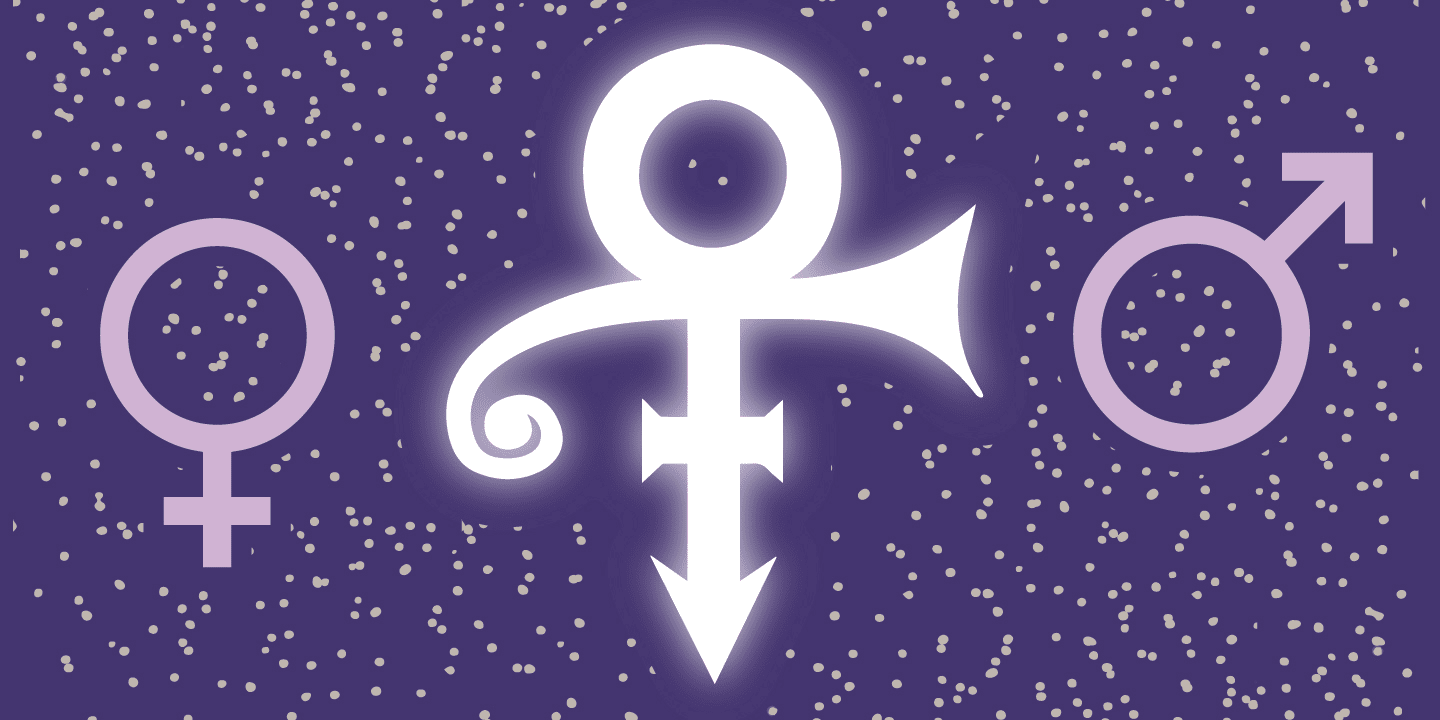
Somewhere in interstellar space a supernova formed the Love Symbol. The year was 1982 and Prince was exploding into the realms of American popular culture. Ten years later, he'd go on to adopt the unpronounceable mark as the only proper visual moniker for The Artist Formerly Known as Prince, but the symbol was born in 1982, on the album cover for 1999. There, in a collage that scintillated with the Love Symbol's formative phases, Minnesota's Purple Yoda imaged a manifesto against social prototypes.
“I don't want words that other people have invented. All the words are other people's inventions. I want my own stuff, my own rhythm, and vowels and consonants too, matching the rhythm and all my own.”
—Hugo Ball, Dada Manifesto. Zurich, July 14, 1916.
Deep within a starry, violaceous space, the words Prince and 1999 dominate the album cover's vast expanse. Presumably it was Prince himself who drew its letters and numbers, along with other [non]representational shapes, symbols, and scenes. In doing so, the Purple One reflected on his previous body of work to propel rebellion across lightyears.
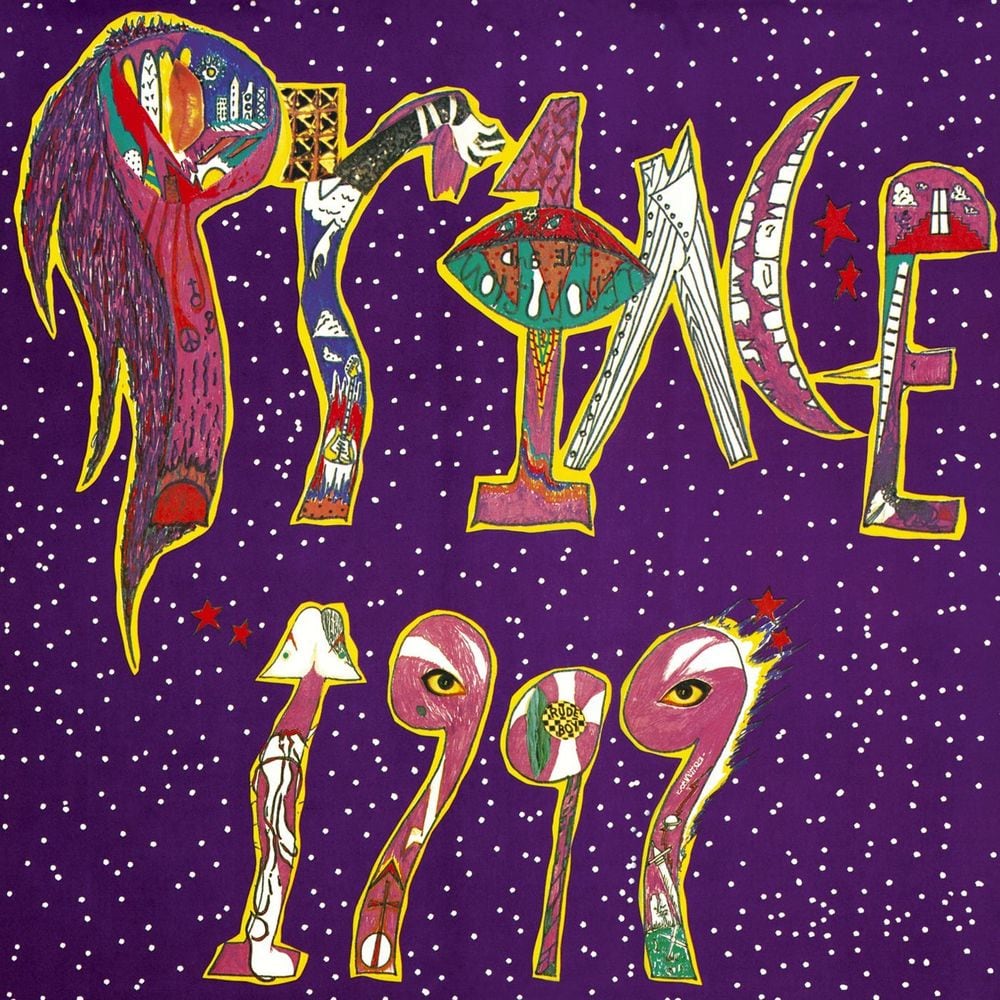 1999 album art
1999 album art
The album cover to 1999 references those of Dirty Mind (1980) and Controversy (1981). Prince dons similar jackets on both covers; similarly, the gold spikes on the left shoulder area of both jackets reappear within 1999’s r. The round gold broach on the second 9 in 1999 comes from the jackets’ right lapel. Also from Controversy, Prince appropriated the shape of the E, and his eyes from the cover’s photograph. He positioned his eyes on the first and third 9s. Prince created a repertorial nexus vis-à-vis visuals.
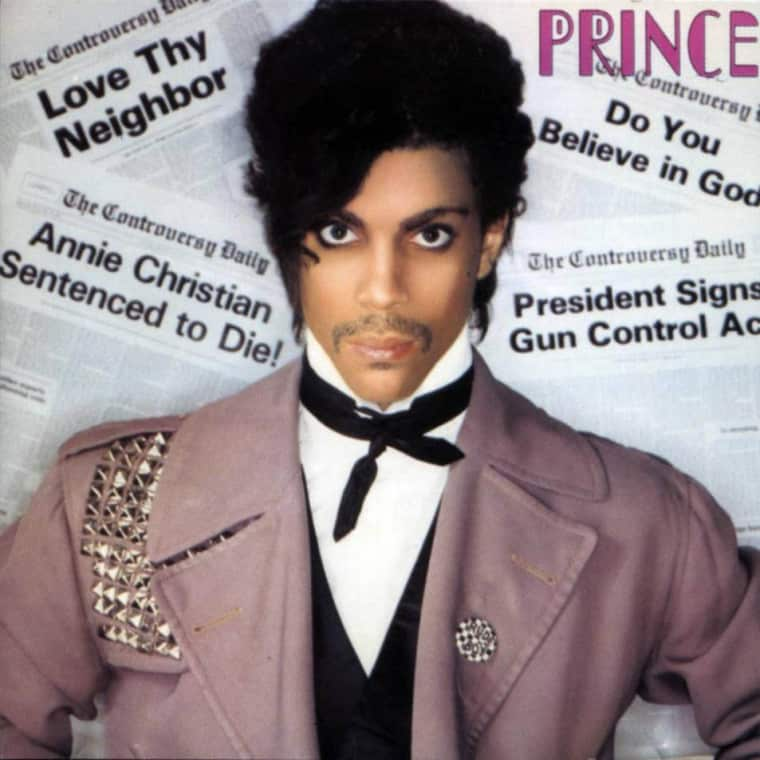 Controversy (1981)
Controversy (1981)
 Detail: gold spike from 1999 (1982)
Detail: gold spike from 1999 (1982)
“Freedom: Dada Dada Dada, a roaring of tense colors, and interlacing of opposites and of all contradictions, grotesques, inconsistencies: LIFE”
—Tristan Tzara, Dada Manifesto 1918
The synodic link between Prince's material also surfaces visually as he rethought social patterns: gender, sexuality, and race. Nothing on the cover marks conventionally The Artist's race. This was the first time a photograph of Prince does not command an LP cover since his debut album, 1978's For You. Prince eclipsed race in order to critique it. And, like his postures on the covers of his previous albums, he paraded—full-frontally—his beliefs concerning gender and sexuality.
The iconography of the P and the 1 in 1999 illustrate Prince's [re]contextualization of norms revolving around sexuality and gender. A mane akin to a lion's frames the P. This is most likely an allusion to the title track where Prince proclaimed, I got a lion in my pocket/ And baby he's ready to roar. Such an image of ferocity and strength is juxtaposed alongside an erect phallus—the 1 in 1999. Prince complicated these highly masculine identifications with the Love Symbol.
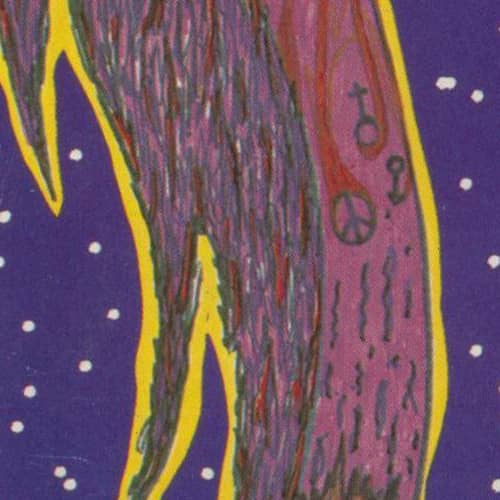 Detail: lion’s mane and symbols
Detail: lion’s mane and symbols
 Detail: phallus, combined symbols, and Prince's eye
Detail: phallus, combined symbols, and Prince's eye
In the same P where a mane suggests Prince's masculinity, the Love Symbol began its genesis, making its first appearance with its first configuration. The widely used emblems for peace (☮), femininity (♀) and masculinity (♂) emanate separately from a sun. After traveling through the letters spelling Prince, the three icons return as one, O(+>, following the phallic 1 at the bottom of the 9, as if the product of ejaculation. The melding of the three convolutes gender by implying that multiple can exist in one entity—simultaneously and without much turbulence. In that way, the Love Symbol cruise-controls on sexual ambiguity. 1999's cover shares paradigm-altering eccentricities with artists from a former time and space.
“What we need is works that are strong straight precise and forever beyond understanding. Logic is a complication. Logic is always wrong.”
—Tristan Tzara, Dada Manifesto 1918
Prince's cover art for 1999 is analogous to Francis Picabia's 1921 Dada painting-collage-photomontage, L'Oeil Cacodylate. Conceptualized by Picabia and assembled collectively alongside other Dada artists, the work exemplifies the Dada aesthetic of challenging socio-artistic conventions.
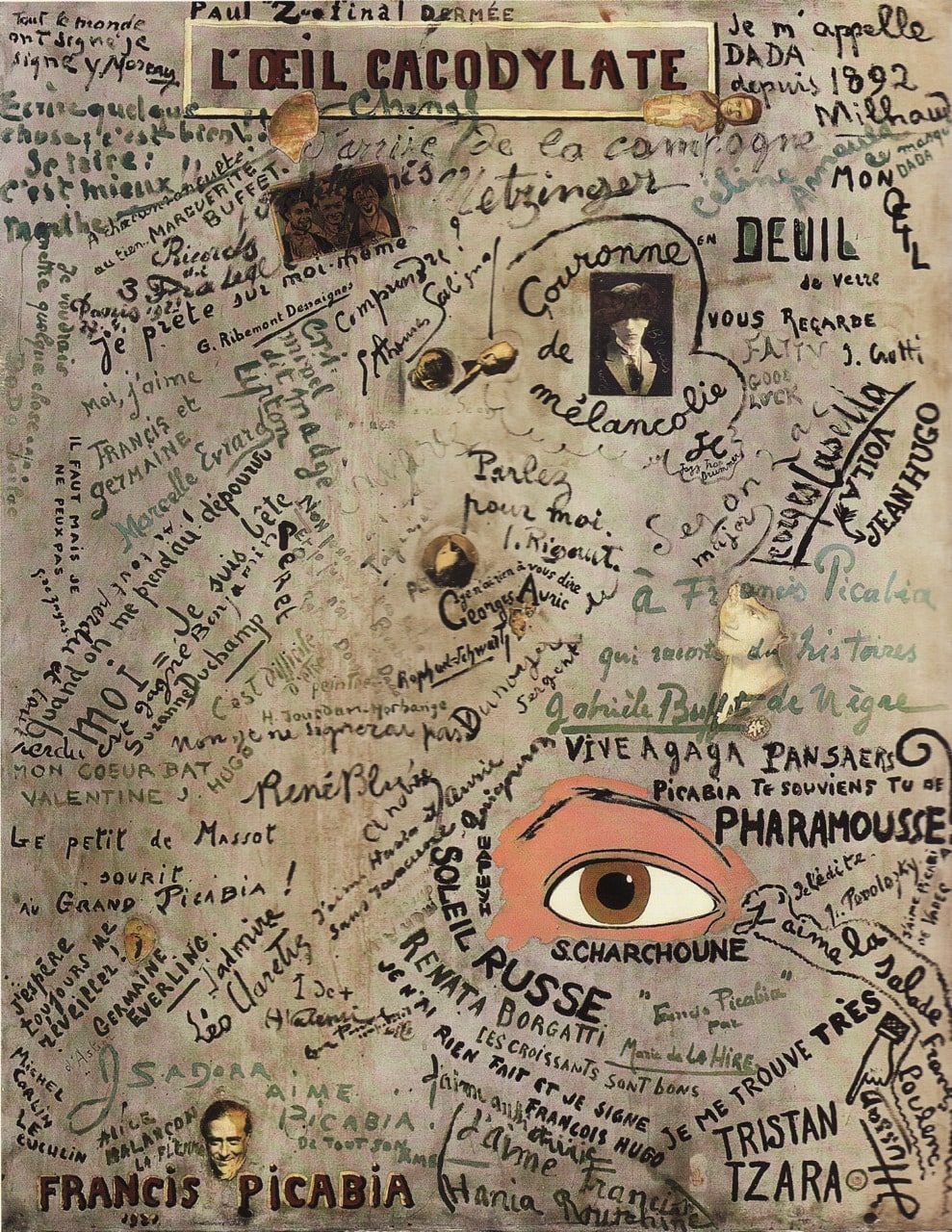 Francis Picabia, L'Oeil Cacodylate, 1921.
Francis Picabia, L'Oeil Cacodylate, 1921.
“How does one achieve eternal bliss? By saying dada. How does one become famous? By saying dada… How can one get rid of everything that smacks of journalism, worms, everything nice and right, blinkered, moralistic, europeanised, enervated? By saying dada.”
—Hugo Ball, Dada Manifesto, Zurich, July 14, 1916
In L'Oeil Cacodylate, several Dadaists invoked their corporeality through their signature, and in the process questioned and negated normalcy. Prince, too, controverted conventions while incorporating individuals. When he designed the words Prince and 1999, he signed and dated the album cover, symbolically. Prince's physicality was the cover's zenith. Picabia and his coterie of artists foresaw as they invoked, and even though the Dadaists gazed outwardly, Prince probed in reverse. His eyes caused a syzygy between his mission and that of the Dadaists. Within the confines of a third eye—part of the 1 representing the I in Prince—the artist wrote backwards: “and the Revolution.” Two years later, in 1984, Prince and the Revolution would officially become a self-contained band. And, baby, it was automatic; they were stars.
A version of this story originally appeared in Spook Magazine in 2012. Used with permission.